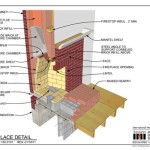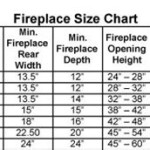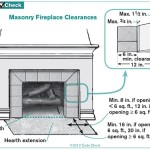Understanding Fireplaces: A Comprehensive Guide
Fireplaces, historically and currently, serve a dual purpose: providing warmth and creating an aesthetically pleasing focal point within a home. Their design, functionality, and maintenance have evolved significantly over time, offering a wide range of options for homeowners seeking to incorporate or upgrade this classic home feature. This article provides an in-depth exploration of various aspects of fireplaces, from their different types to the considerations necessary for safe and efficient operation.
Types of Fireplaces: Fuel Sources and Design Variations
The primary differentiating factor among fireplaces is the fuel source they utilize. Each type presents distinct advantages and disadvantages, affecting factors such as installation costs, operational efficiency, and environmental impact.
Wood-Burning Fireplaces: These are the traditional, time-honored fireplaces that rely on the combustion of wood as their fuel source. They offer a unique ambiance, characterized by the crackling sounds and distinct aroma of burning wood. However, they also require a significant amount of tending, including the sourcing, storing, and loading of wood. Moreover, wood-burning fireplaces can contribute to air pollution if not operated efficiently and require regular chimney cleaning to mitigate the risk of chimney fires.
The design of wood-burning fireplaces has evolved over time. Traditional masonry fireplaces are built from brick, stone, or other similar materials, often featuring a large hearth and a chimney for venting smoke. These fireplaces are typically built as part of the home's structure. Prefabricated wood-burning fireplaces, on the other hand, are factory-built units that can be installed more easily and often offer higher efficiency due to better insulation and controlled airflow. These prefabricated units are often enclosed in a decorative surround to mimic the appearance of a traditional masonry fireplace.
Gas Fireplaces: Gas fireplaces offer a convenient and cleaner alternative to wood-burning fireplaces. They operate on natural gas or propane, providing instant heat at the touch of a button. Gas fireplaces eliminate the need for wood storage and reduce the risk of chimney fires due to cleaner burning. They also offer greater control over heat output, allowing users to adjust the flame intensity to their desired level.
Gas fireplaces come in various styles, including direct-vent, vent-free, and vented models. Direct-vent fireplaces draw combustion air from outside and vent exhaust gases directly outside, making them highly efficient and safe. Vent-free fireplaces, also known as ventless fireplaces, do not require a chimney or vent, making them easier to install in existing homes. However, they require careful monitoring of indoor air quality to prevent the buildup of carbon monoxide. Vented gas fireplaces resemble traditional wood-burning fireplaces but burn gas instead of wood, venting exhaust gases through a chimney.
Electric Fireplaces: Electric fireplaces are the most convenient and versatile option, requiring only a standard electrical outlet for operation. They produce heat by passing electricity through a heating element and circulating warm air into the room. Electric fireplaces do not produce any emissions and require no venting, making them ideal for apartments, condos, and other spaces where installing a traditional fireplace is not feasible.
Electric fireplaces are available in a wide range of styles, from wall-mounted units to freestanding stoves to fireplace inserts. Many models feature realistic flame effects, creating the ambiance of a traditional fireplace without the hassle of burning wood or gas. Some electric fireplaces also include features such as timers, thermostats, and remote controls for added convenience.
Ethanol Fireplaces: Ethanol fireplaces use liquid ethanol, a biofuel derived from plant sources, as their fuel. They are ventless and require no chimney or gas line, making them easy to install and relocate. Ethanol fireplaces produce a clean-burning flame with minimal soot or ash, making them an environmentally friendly option. However, they typically produce less heat than wood-burning or gas fireplaces and require careful handling of flammable ethanol fuel.
Ethanol fireplaces are available in various styles, including tabletop models, wall-mounted units, and freestanding units. They are often used as decorative focal points rather than primary heating sources. The cost of ethanol fuel can be a significant factor in the overall operating cost of these fireplaces.
Factors Influencing Fireplace Efficiency and Safety
Regardless of the type of fireplace chosen, several factors influence its overall efficiency and safety. Proper installation, regular maintenance, and careful operation are crucial to maximizing the benefits and minimizing the risks associated with fireplaces.
Installation: Proper installation is paramount to ensure the safe and efficient operation of any fireplace. Wood-burning fireplaces require a properly sized and constructed chimney to vent smoke and combustion gases effectively. Gas fireplaces require a professionally installed gas line and venting system. Electric fireplaces require a dedicated electrical circuit to prevent overloading. It is always recommended to hire qualified professionals for fireplace installation to ensure compliance with local building codes and safety standards.
Ventilation: Adequate ventilation is essential for all types of fireplaces, especially wood-burning and gas fireplaces. Proper ventilation ensures that combustion gases are safely vented outside, preventing the buildup of harmful substances such as carbon monoxide. Carbon monoxide is a colorless, odorless gas that can be deadly if inhaled in high concentrations. Carbon monoxide detectors should be installed near all fireplaces to provide early warning of potential leaks.
Maintenance: Regular maintenance is crucial for maintaining the efficiency and safety of fireplaces. Wood-burning fireplaces require regular chimney cleaning to remove creosote buildup, a flammable substance that can cause chimney fires. Gas fireplaces require annual inspections to check for gas leaks and ensure proper burner operation. Electric fireplaces require periodic cleaning to remove dust and debris from the heating element and fan.
Fuel Storage and Handling: Proper fuel storage and handling are essential for preventing accidents and ensuring the safe operation of fireplaces. Wood should be stored in a dry, well-ventilated area away from the home to prevent moisture damage and pest infestations. Gas cylinders should be stored upright in a secure location, away from heat sources and ignition sources. Ethanol fuel should be stored in tightly sealed containers in a cool, dark place, away from open flames.
Operation: Careful operation is essential for preventing accidents and maximizing the efficiency of fireplaces. Wood-burning fireplaces should be operated with a fire screen to prevent sparks from escaping and igniting nearby materials. Gas fireplaces should be operated according to the manufacturer's instructions, and the flame intensity should be adjusted to the desired level. Electric fireplaces should be operated with caution to prevent overheating and electrical hazards. Never leave a fireplace unattended while it is in operation.
Fireplace Aesthetics and Design Integration
Beyond their functional aspects, fireplaces play a significant role in the aesthetics and design of a home. They serve as focal points, adding warmth, character, and visual interest to living spaces. The design and style of a fireplace should complement the overall architectural style of the home and reflect the homeowner's personal taste.
Materials and Finishes: The materials and finishes used in fireplace construction and surrounding areas contribute significantly to its overall aesthetic appeal. Traditional masonry fireplaces are often built from brick, stone, or tile, offering a rustic and timeless look. Modern fireplaces may feature sleek materials such as glass, stainless steel, or concrete, creating a more contemporary vibe. The choice of materials should be carefully considered to complement the surrounding décor and create a cohesive design.
Mantels and Surrounds: The mantel and surround are the decorative elements that surround the fireplace opening, adding visual interest and providing a space for displaying artwork, photos, and other decorative items. Mantels can be made from wood, stone, metal, or other materials, and they can be simple or ornate, depending on the desired style. Surrounds can be made from tile, stone, brick, or wood, and they can be customized to create a unique and personalized look.
Fireplace Inserts: Fireplace inserts are self-contained units that are designed to fit into an existing fireplace opening. They can be used to upgrade an existing fireplace to a more efficient and aesthetically pleasing model. Fireplace inserts are available in wood-burning, gas, and electric models, offering a wide range of options to suit different needs and preferences. They can significantly improve the heating efficiency of an existing fireplace and enhance its overall appearance.
Fireplace Accessories: A variety of fireplace accessories can enhance the functionality and aesthetics of a fireplace. Fireplace tools, such as pokers, tongs, and shovels, are essential for tending to wood-burning fires. Fireplace screens prevent sparks from escaping and protect against accidental burns. Fireplace grates elevate the wood and allow for better airflow, promoting more efficient burning. Decorative logs and fire starters add visual interest and make it easier to start a fire. The appropriate selection of accessories can significantly enhance the fireplace experience.
Integration with Home Décor: A fireplace should be integrated seamlessly with the overall décor of the home. The style, color, and materials of the fireplace should complement the surrounding furniture, flooring, and wall coverings. The fireplace should be positioned in a way that maximizes its visual impact and creates a focal point for the room. Thoughtful consideration of these factors will ensure that the fireplace enhances the overall aesthetic appeal of the home.
Investing in a fireplace requires careful consideration of various factors, including fuel source, efficiency, safety, and aesthetics. By understanding the different types of fireplaces available and paying attention to the factors that influence their performance, homeowners can make informed decisions and create a warm, inviting, and aesthetically pleasing focal point in their home.

The Fireplace Guys St Paul Minneapolis Gas

The Fireplace Guys

The Fireplace Guys St Paul Minneapolis Gas
Thee Fireplace Guys Gas Repair Service In Southeast Kansas If We Can T Fix It You Don Pay

Portfolios Fireplaces The Fireplace Guys

The Fireplace Guys 30 Photos 13 Reviews 680 Hale Ave N Oakdale Minnesota Services Phone Number Yelp

The Fireplace Guys 17 Photos 51 Reviews Malden Massachusetts Services Phone Number Yelp

Fireplace Ideas The Guys Oakdale Mn

The Fireplace Guys 30 Photos 13 Reviews 680 Hale Ave N Oakdale Minnesota Services Phone Number Yelp

The Fireplace Guys 17 Photos 51 Reviews Malden Massachusetts Services Phone Number Yelp
Related Posts








